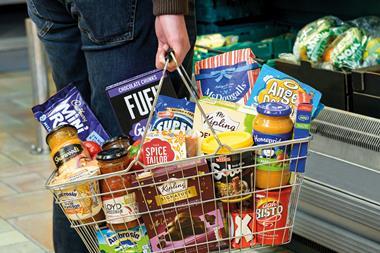After hitting record highs last year, commodity prices are back to more reasonable levels. But how much volatility lies ahead, asks James Ball
Commodity prices hit record highs this time last year as supply shortage, rocketing demand and speculation created a 'perfect storm' in the markets.
Since then, prices have fallen back substantially. Figures from Mintec show maize is down 25% year-on-year, oats are down 36% and rye is down 46%, even after taking account of the plunging pound. Better yet, wheat - which accounts for 20% of the world's calorie consumption - has shared in the price drops, falling 26% year-on-year.
But despite the substantial drop in prices, retail prices are not yet set to follow, experts warn.
"It must be remembered that last year's price spike was exceptional," said Alex Waugh of the National Association of British and Irish Millers. "After you've been at the top of Everest, everything seems much lower, even if you're 20,000 ft up. Prices are still higher than they have been over the past decade."
It was still very early in the growing season, so prices were likely to remain volatile over the next few months, he added.
"Prices have fallen largely because the market is hopeful 2009 harvests will be good," he said. "But with a spell of bad weather, that could very rapidly change. Wheat for November 2009 is currently priced higher than wheat for delivery now. It's a risk premium."
The UK wheat situation is complicated by the poor quality of the 2008 harvest. Despite bumper yields, little of the wheat was of breadmaking quality, pushing up the price of the remainder and forcing some millers to import grain.
It wouldn't be possible to accurately predict the quality of this year's crop until June at the earliest, said Waugh.
There are other potential issues. At the beginning of 2009, China was suffering from drought conditions, but the Government has released little information on the extent or severity of the situation, casting doubts on the potential size of its harvest. Meanwhile, the European and American crops are still several months off harvest.
These uncertainties mean that though cost prices appear to have plummeted, manufacturers and processors are unable to capitalise on the lower prices, thus propping up retail prices.
On the upside, scientists this week unveiled a new variant of wheat, which is resistant to the strain of fungal rot that has been decimating crops in Africa and the Middle East. This removes some risk of supply shortages and should help to stabilise prices.
Plus, if the key grain crops remain at their current pricing level when harvest approaches, this should affect retail prices. Wheat in particular is one of the biggest drivers of food prices due to its role in both milling and animal feed. Bakery is likely to be most affected, as milling wheat has fallen least in price since last year's spike.
"The markets are still very tight," concludes Waugh. "But there have been some small buildups of stock, and as the picture becomes clearer, prices could fall."
Commodity prices hit record highs this time last year as supply shortage, rocketing demand and speculation created a 'perfect storm' in the markets.
Since then, prices have fallen back substantially. Figures from Mintec show maize is down 25% year-on-year, oats are down 36% and rye is down 46%, even after taking account of the plunging pound. Better yet, wheat - which accounts for 20% of the world's calorie consumption - has shared in the price drops, falling 26% year-on-year.
But despite the substantial drop in prices, retail prices are not yet set to follow, experts warn.
"It must be remembered that last year's price spike was exceptional," said Alex Waugh of the National Association of British and Irish Millers. "After you've been at the top of Everest, everything seems much lower, even if you're 20,000 ft up. Prices are still higher than they have been over the past decade."
It was still very early in the growing season, so prices were likely to remain volatile over the next few months, he added.
"Prices have fallen largely because the market is hopeful 2009 harvests will be good," he said. "But with a spell of bad weather, that could very rapidly change. Wheat for November 2009 is currently priced higher than wheat for delivery now. It's a risk premium."
The UK wheat situation is complicated by the poor quality of the 2008 harvest. Despite bumper yields, little of the wheat was of breadmaking quality, pushing up the price of the remainder and forcing some millers to import grain.
It wouldn't be possible to accurately predict the quality of this year's crop until June at the earliest, said Waugh.
There are other potential issues. At the beginning of 2009, China was suffering from drought conditions, but the Government has released little information on the extent or severity of the situation, casting doubts on the potential size of its harvest. Meanwhile, the European and American crops are still several months off harvest.
These uncertainties mean that though cost prices appear to have plummeted, manufacturers and processors are unable to capitalise on the lower prices, thus propping up retail prices.
On the upside, scientists this week unveiled a new variant of wheat, which is resistant to the strain of fungal rot that has been decimating crops in Africa and the Middle East. This removes some risk of supply shortages and should help to stabilise prices.
Plus, if the key grain crops remain at their current pricing level when harvest approaches, this should affect retail prices. Wheat in particular is one of the biggest drivers of food prices due to its role in both milling and animal feed. Bakery is likely to be most affected, as milling wheat has fallen least in price since last year's spike.
"The markets are still very tight," concludes Waugh. "But there have been some small buildups of stock, and as the picture becomes clearer, prices could fall."

















No comments yet